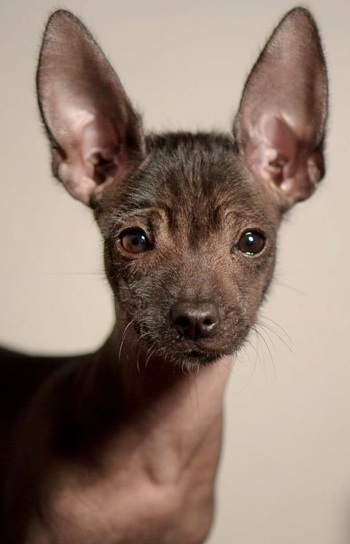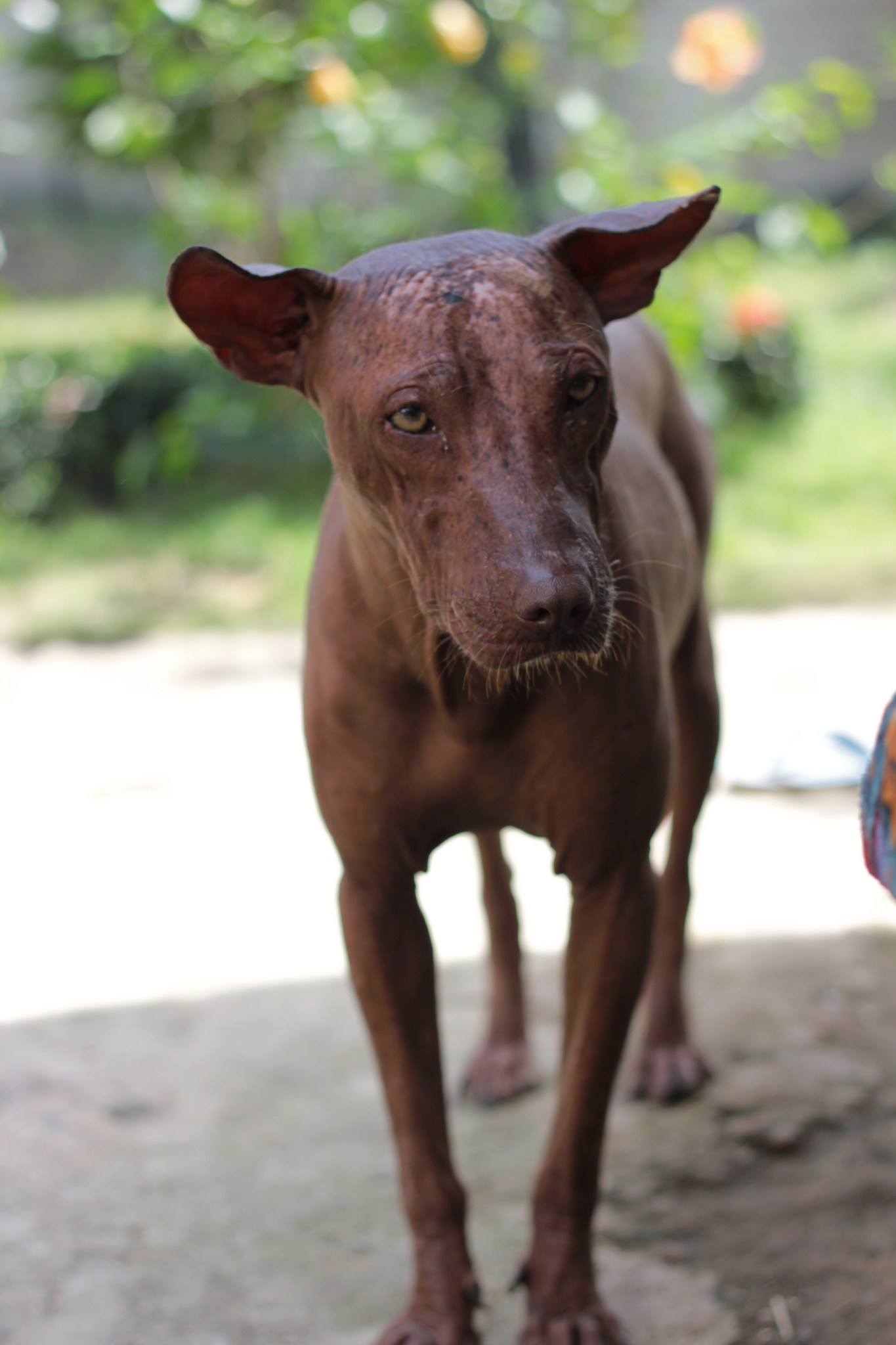
The Mexican Hairless Dog is rare in the United States and is often confused with the Chupacabra. They are considered a hairless breed and are prone to very few health problems resulting in a life span that is longer than many other breeds. Well-trained Mexican Hairless adult dogs have a calm yet curious temperament. Most people will take one look at the Mexican Hairless Dog and label them ugly or strange-looking but more devoted dog lovers, including the AKC, see beauty in the form and movement of this breed.
- Mexican Hairless Dog Height: 10 to 23 inches tall
- Mexican Hairless Dog Life Span: up to 18 years
- Other Names: Xoloitzcuinti, Xoloitzquintle, or Xoloitzcuincle, or shortened to Xolo.
- Mexican Hairless Dog Price: $500-$900
Mexican Hairless Dog Basics
The Aztecs believed the Xoloitzcuintli was originally created from the “Bone of Life” whereas Native Americans have long considered this breed as protectors and guardians against intruders and evil spirits.
In some ancient cultures, these dogs were sacrificed for rituals or were laid to rest with their masters because it was believed they guided the soul after death. These dogs originated from warmer regions and aren’t well suited to colder climates. Care should be taken to keep them warm during exercise periods if they are to be in colder regions.
The Mexican hairless dog is bred in three different sizes including standard which is the largest, miniature, and toy. They are one of the hairless breeds of dogs and have a slender body style, pointed ears and a pointed nose.
Mexican hairless dogs are typically blue gray or black. Coated varieties of this breed have a short, flat coat. They need occasional grooming and shed very little. Hairless varieties typically have only a partial set of teeth but coated varieties have a full set of teeth.
Mexican Hairless Dog Temperament

The Mexican Hairless Dog is highly intelligent and curious. They have a strong hunting instinct and the high energy needed for it. Adult dogs of this breed are typically calm but can be wary of strangers.
Due to their primitive nature, Mexican Hairless Dogs are prone to chase other animals such as squirrels, chipmunks, cats, and even other dogs. Because of their inquisitive nature and high intelligence level, they can be challenging to keep fenced in if not supervised outdoors and properly trained.
Mexican Hairless Dog Pros and Cons
Pros
- Can develop a strong bond with their favorite human
- Make good guard dogs if well-trained
- Not prone to health problems other than some skin issues if not cared for properly
- Thrives as an inside dog and member of the family
- Not an excessive barker breed (see Dogs for Kids and Quite Dogs)
- Very trainable
- Not prone to excessive shedding like other breeds
Cons
- Can be escape artists
- Too big for apartment living
- Prone to aggression
- Need large outdoor space, sturdy fencing, and good supervision
- Prefer to be an only dog
- Are not outdoor only animals
- Lack of proper training can lead to behavior issues
Mexican Hairless Dog Life Span
The Mexican Hairless Dog is one of the oldest breeds, dating back to the ancient Aztec period. The average lifespan for a Mexican Hairless Dog today is 13 to 18 years, it’s one of the longer lifespans for dogs. This is due to the sturdiness of the breed.
Mexican Hairless Dog Health Issues and Genetic Problems
Mexican Hairless Dogs as a breed do not experience many of the health issues that are common for other breeds. Recommended health tests include hip, eyes, heart, and patella to identify any potential problems earl on.
Skin issues are more likely to develop without proper diet, bathing, and grooming. Overall this breed is primarily healthier than many other breeds. In fact, in ancient times, the Xoloitzciuntlis’ warm skin was believed to be healing and the dogs were often used as a way to ward off diseases. They can be great pets for people who suffer from pet allergies due to the fact they have little or no hair.
Mexican Hairless Dog Puppies
Mexican Hairless Dog puppies are typically very high energy. Puppies can be very loud and love to chew so supervision and structure is needed to prevent them from developing bad habits. These puppies need intensive training from someone with knowledge and experience in working with intelligent dogs in order to develop into well-behaved adult companions.
Puppies generally mature at around two years old and should grow calmer as give a good indication of what their adult temperament will be.
Mexican Hairless Dog Rescue

If you’re looking to add a dog to your family, consider a Mexican Hairless Dog rescue center over a pet store or breeder. Shelter or rescue dogs are generally already housebroken and many have already been trained so you can skip the intensive “puppy training” period.
When you visit a Mexican Hairless Dog at a shelter or rescue center, what you see is what you get. Shelter staff will have already evaluated any adult dogs to identify any issues with temperament.
Most adult dogs of this breed get along well with other dogs and children. But because training records of shelter animals are often incomplete or unknown, if you have children or other animals, make sure you ask shelter staff about your potential new dog’s temperament in these situations.
Not everyone wants to adopt adult dogs, puppies are just so “cute”. But there are many hidden advantages to adopting an adult dog from a rescue center or shelter. Millions of animals are killed annually in shelters and nearly one quarter of these are purebred dogs.
By being one of those few people willing to consider a rescue center or shelter over a pet shop, you can literally save a dog from being put down. In addition, you could bring home a purebred Mexican Hairless adult dog that will be your loyal companion for life.